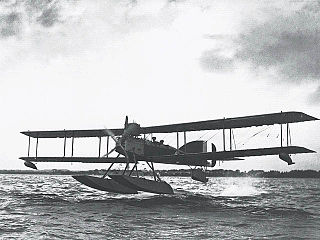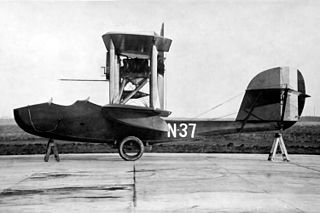The British Royal Naval Air Service established an R.N. Aeroplane Repair Depot on the Isle of Grain on the River Medway Estuary in Kent in early 1915. As there was already a RNAS seaplane base on the Isle of Grain, the Depot was named Port Victoria, after the nearby railway station. It became the Marine Aircraft Experimental Depot, [1] comprising 3 sections:

The Royal Naval Air Service (RNAS) was the air arm of the Royal Navy, under the direction of the Admiralty's Air Department, and existed formally from 1 July 1914 to 1 April 1918, when it was merged with the British Army's Royal Flying Corps to form the Royal Air Force, the world's first independent air force.
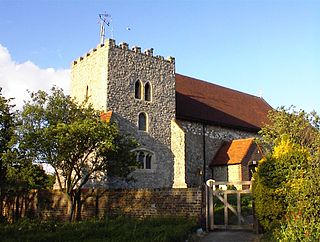
St James, Isle of Grain is a village and the easternmost point of the Hoo Peninsula within the district of Medway in Kent. No longer an island and now forming part of the peninsula, the area is almost all marshland and is a major habitat for diverse wetland birds. The village constitutes a civil parish, which at the 2011 census had a population of 1,648, a net decrease of 83 people in 10 years.
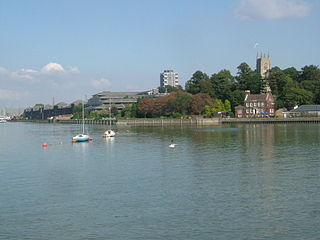
The River Medway is a river in South East England. It rises in the High Weald, Sussex and flows through Tonbridge, Maidstone and the Medway conurbation in Kent, before emptying into the Thames Estuary near Sheerness, a total distance of 70 miles (113 km). About 13 miles (21 km) of the river lies in Sussex, with the remainder being in Kent.
- Experimental Construction Depot
- Seaplane Test Depot
- Experimental Armament Section
It was renamed Marine and Armament Experimental Establishment on 16 March 1920 in recognition of the fact that weapons and other equipment were evaluated as well as complete aircraft. It was renamed again on 1 March 1924 to the Marine Aircraft Experimental Establishment and eventually moved to Felixstowe.
The Marine Aircraft Experimental Establishment (MAEE) was a British military research and test organisation. It was originally formed as the Marine Aircraft Experimental Station in October 1918 at RAF Isle of Grain, a former Royal Naval Air Service seaplane base, to design, test and evaluate seaplanes, flying boats and other aircraft with a naval connection.
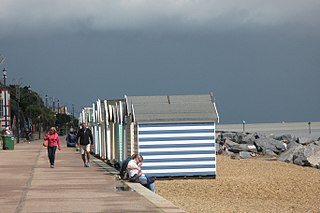
Felixstowe is a seaside town in Suffolk, England. At the 2011 Census, it had a population of 23,689. The Port of Felixstowe is the largest container port in the United Kingdom.
While at Port Victoria it designed a range of experimental aircraft, not all of which were constructed and flown.

